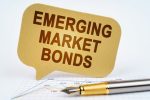The transition to renewable energy and net-zero carbon emissions provides long-term investors with an opportunity to get ahead of the regulatory, economic, and fiscal curve. Shawn Reynolds, portfolio manager at VanEck, and Charles Cameron, deputy portfolio manager, hard assets at VanEck, discuss the energy transition components, why the macroeconomic environment is conducive to transition, and investment opportunities in a webcast moderated by Lara Crigger, managing editor for ETF Trends and ETF Database.
Inflation remains a primary concern for advisors, with 51% reporting that it was their chief focus in 2022, over market valuations, interest rate hikes, and finding income. Cameron explains that inflation has spread from stocks to real estate and now into commodities, and with China’s easing of fiscal policy, liquidity within commodities is going to transition to China, as it is the largest global commodity consumer.
The low inflation environment that markets and the economy have experienced for the last decade is more of an anomaly, Cameron says; when looking back historically, CPI was traditionally above 2% for three-quarters of the time over the last 50 years. In a mid-tier inflationary environment of 2%-6%, “resource equities add returns to your portfolio and diversification, something no one has really had to look at in the last 10 years,” Cameron explains.
Green energy is essentially its own, new asset class, and Reynolds believes that advisors are going to have to make a decision regarding if and how they are going to play the energy transition.
“The calculus of inflation is undoubtedly going to start increasingly being linked to energy transition and all the resources, businesses, innovations technology that feed into resource transition or energy transition,” Reynolds says. “When we talk about inflation, there’s no way that we can avoid thinking about how energy transition feeds into it.”
VanEck estimates that $110 trillion in capital will be necessary to meet the net-zero emissions goals by 2050 from the Paris Agreement. The resource transition is already happening as renewables continue to grow, along with electric vehicles, but other industries so far remain largely unaccounted for, and broadly speaking, an exponential amount of investment will be needed to bring about the energy transition.
The Mineral Cost of Energy Transition
The energy transition is going to be highly mineral-intensive as the technologies rely on minerals for components. China currently dominates the market for raw minerals and mineral processing; the smallest amount of mineral production that China handles by percentage is nickel, of which China produced 35% of the world’s supply. For all other minerals necessary for renewables, China has a much larger slice of the pie, all the way up to lithium ion, which China is responsible for 85% of.
The demand for minerals is creating the need for a swath of new mines in order to meet the supply, which will take years and sometimes decades to establish, and for which construction is already encountering resistance in some areas. Prices are already beginning to increase in response to the supply and demand imbalance, creating the greenflation that VanEck sees going forward.
“If you talk to any resource or mining manager today, or executive, the prices that are out there today, it doesn’t really matter; they can’t move faster. They can only go at a certain pace, and as we pointed out, it’s going to take a long time for this to happen,” explains Reynolds.
Recent years have allowed for companies to optimize their balance sheets, paying down debts and utilizing buybacks to reduce leverage and position themselves better. Valuations remain very low for sectors such as agriculture, energy, and materials, while dividends and variable dividends, which are directly linked to inflation, continue to rise.
VanEck has a suite of ETFs that align with strategies for an energy transitioning world, both broadly investing as well as more targeted exposures. Offerings include the VanEck Green Metals ETF (GMET), the VanEck Low Carbon Energy ETF (SMOG), the VanEck Future of Food ETF (YUMY), the VanEck Green Bond ETF (GRNB), and others.
Financial advisors who are interested in learning more about getting ahead of the green energy transition can watch the webcast here on demand.
For more news, information, and strategy, visit the Beyond Basic Beta Channel.







